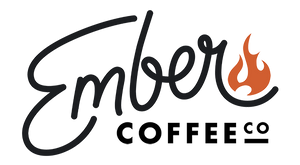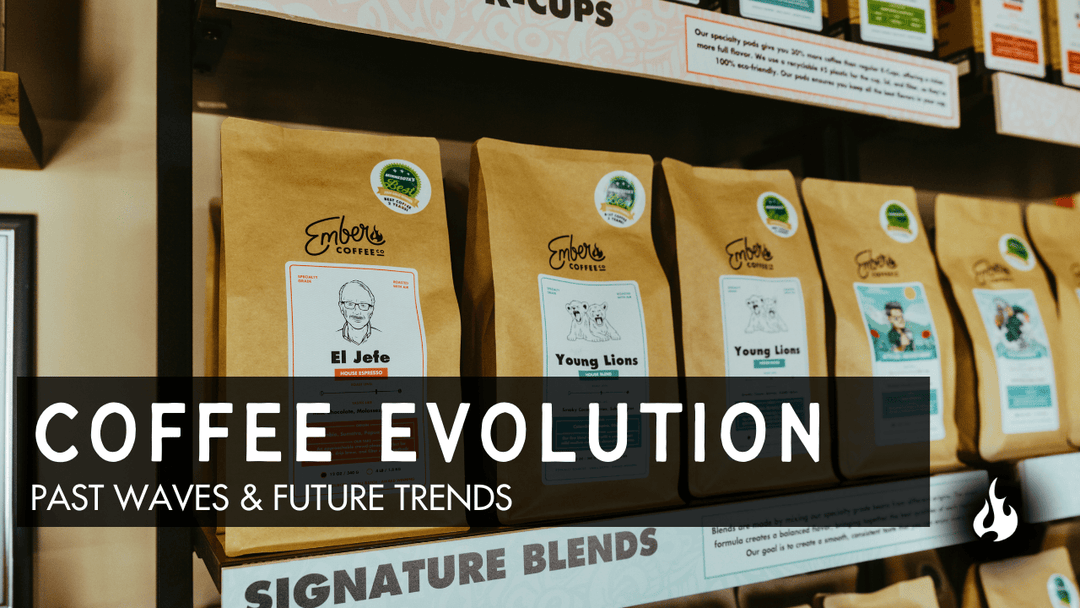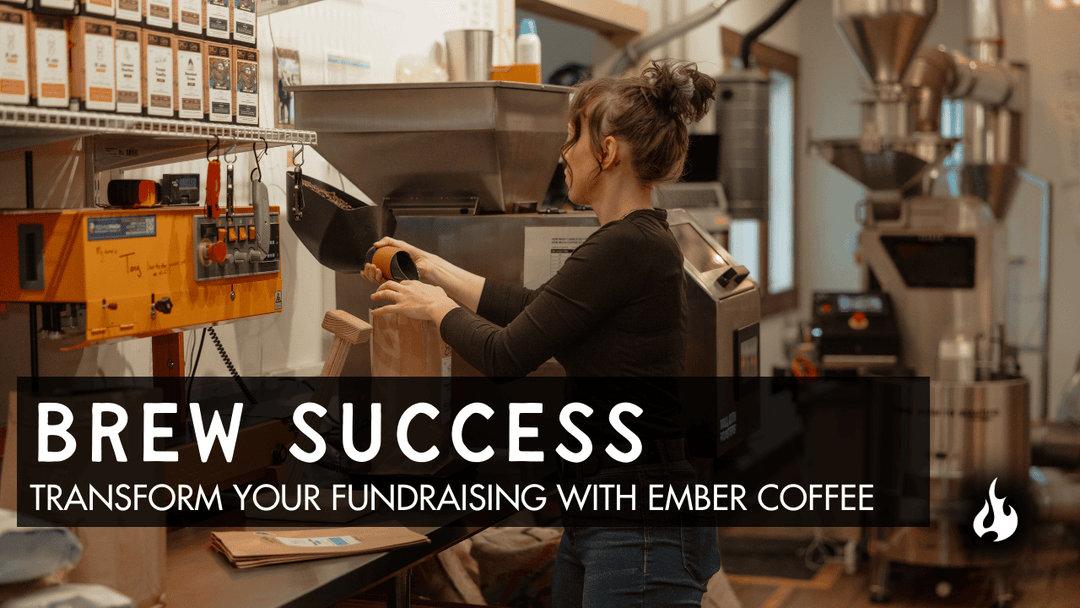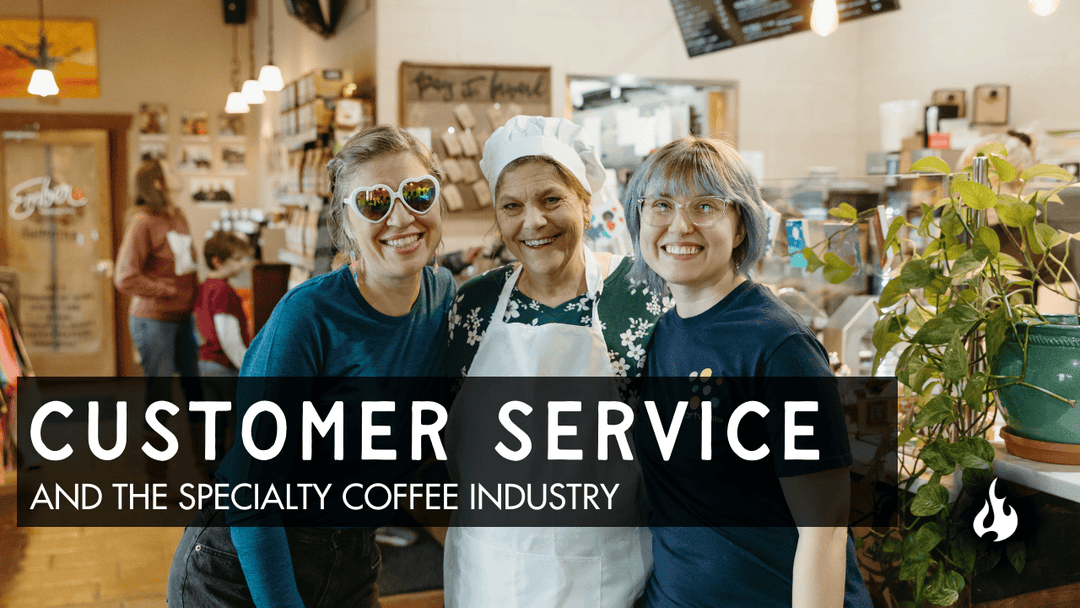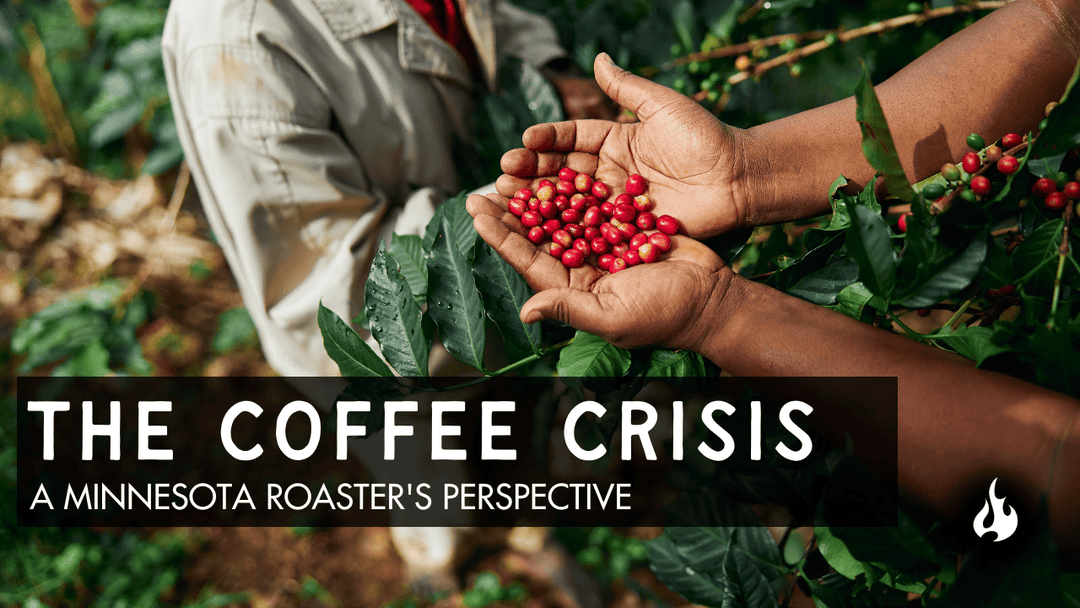Balancing responsibilities is never easy, whether you’re running a startup, managing a department, or, in my case, growing Ember Coffee. From overseeing our Minnesota coffee shop operations to managing the supply chain for our ethically sourced beans, time management is a constant challenge. But one key lesson I’ve learned over the years is this: productivity isn’t about doing more—it’s about focusing on what matters most.
A game-changing tool that reshaped how I approach work is Craig Groeschel’s prioritization framework. It’s a simple yet powerful method for zeroing in on meaningful tasks while cutting out distractions. In this blog, we’ll dive into his four-tier framework and explore how you can use it to boost productivity, align your efforts with what truly drives success, and create real impact—whether it’s in your business, career, or personal life.
Understanding Urgency vs. Importance
One of the biggest productivity pitfalls is falling into the tyranny of the urgent—confusing what feels urgent with what is truly important. It’s all too easy to get caught up in tasks that demand immediate attention, like replying to emails, fixing small logistical issues, or handling last-minute requests. We’ve all been there, juggling too many things at once, wondering where the day went.
But as Groeschel wisely reminds us, “when we always attend to the urgent, we sacrifice the important.” Urgent tasks often have short-term impact—answering recurring questions or squeezing in a last-minute meeting. Important tasks, however, are what drive your long-term success, like refining your business strategy, strengthening relationships with customers, or taking time to recharge.
At Ember Coffee, we get it. Life moves fast, and the demands on your time can feel relentless. That’s why we’re here to remind you: productivity doesn’t mean doing everything—it means focusing on what matters most. Sometimes, that means saying "not now" to the urgency and carving out time for what truly moves you forward. So go ahead, take a moment, sip your coffee, and prioritize the important. You’ve got this.
The Four Tiers of Prioritization (Groeschel's Framework)

Here’s how Craig Groeschel’s four-tier prioritization framework can transform your productivity, with examples tailored for productivity enthusiasts and fueled by the focus Ember Coffee brings to your day:
Tier One: Absolutely Mission Critical
These are must-do tasks that keep your operation afloat. If neglected, your team or organization could fall apart. For my coffee business, Tier One tasks include:
- Roasting and packaging coffee for customer orders.
- Maintaining the quality of the product in our Minnesota coffee shop.
- Sourcing exceptional-quality green coffee beans.
If you have too many activities listed here, you risk burnout. A good rule of thumb is to stick to five or fewer mission-critical tasks.
Tier Two: Very Important and Strategic
These tasks play a vital role in your long-term goals but are not immediately critical. Examples might include:
- Ensuring equipment safety and functionality of equipment.
- Analyzing customer engagement data for marketing strategy adjustments.
- Training staff to increase efficiency and elevate customer experiences.
Skipping these won’t cause short-term chaos, but over time, they contribute significantly to your growth.
Tier Three: Meaningful but Not Vital
Tier Three tasks are tempting to prioritize because they're satisfying and enjoyable, but they don’t have a significant impact on success. For instance:
- Experimenting with new drink recipes that aren't in high demand.
- Attending non-essential industry webinars.
- Creating Instagram posts just because they’re "fun" rather than strategic.
It’s easy to fall into the trap of spending too much time on Tier Three because it often feels productive—but they’ll never move the needle if left unchecked.
Tier Four: Externally Initiated and Lower Priority
This is where distractions live. These tasks come from external sources and might feel urgent but don’t align with your objectives. For example:
- Responding to unsolicited product pitches.
- Hosting community events unrelated to your brand mission.
- Endless follow-ups to non-urgent vendor requests.
Learning to say “no” or “not now” to Tier Four activities is essential for reclaiming your focus.
Step-by-Step Guide to Implementing the Framework
Here’s how you can integrate Groeschel’s prioritization framework into your workflow:
Step 1: List All Weekly Activities
Start by documenting every task you handle over a typical week. Include meetings, emails, daily tasks, long-term projects, and even minor errands. If you’re unsure where your time goes, track it for a week using time-management tools like Toggl or Clockify.
Step 2: Categorize Each Activity by Tier
Sort every task into one of the four tiers. This step requires brutal honesty. Ask yourself, “What’s really impactful?” and “What could I stop doing without damaging outcomes?”
Step 3: Analyze and Adjust Priorities
If your Tier One list has too many items, move some down to Tier Two or Tier Three. This practice focuses your energy on fewer, high-impact areas.
Step 4: Take Action
Block out your calendar to prioritize Tier One and Tier Two activities first. Use techniques like time-blocking or the Pomodoro technique to give focused attention to these tasks.
Step 5: Review and Revise Regularly
Every few weeks, revisit your list of activities and adjust as your goals evolve. For example, during the holiday rush, my mission-critical Tier One tasks include increasing production and monitoring inventory closely.

Maximize the impact of this framework with these actionable tips to work smarter, not harder:
Delegate Tier Four Tasks
Free up your time by outsourcing routine, low-impact tasks like accounting, payroll, or scheduling. For example, instead of manually tracking your finances, use tools like QuickBooks to manage accounting seamlessly, or rely on platforms like Gusto to streamline payroll. Apps like Calendly can handle scheduling for you, eliminating back-and-forth emails. If hiring a freelancer feels intimidating, start small by outsourcing one or two tasks on platforms like Upwork or Fiverr. Delegating these time-consuming duties allows you to focus your energy on work that truly benefits from your unique expertise.
Use Time-Blocking for Tier One Tasks
When it comes to high-priority, high-impact tasks (Tier One), timing is everything. Identify your peak energy periods—whether that's mid-morning, after your first coffee, or late afternoon when you're in the zone—and reserve these windows for complex, strategic work. For example, if you're a morning person, dedicate your first hour of the day to brainstorming creative strategies, solving key problems, or making big decisions. Use tools like Google Calendar or Notion to set up time-blocks for these critical tasks. Personally, I color-code my calendar so I can quickly see where my energy should go—blue for deep work, yellow for meetings, and gray for admin tasks. This not only keeps me organized but also ensures I don’t waste my best hours on lower-priority work.
Productivity Apps for Prioritization
Staying on top of your priorities is easier when you have the right tools. Apps like Trello and Todoist can help you organize tasks by priority tiers, making it easy to focus on what matters most. For instance, I use Notion to create visual dashboards where I categorize tasks by urgency and importance. I even add deadlines and tag collaborators so nothing slips through the cracks. Seeing everything laid out visually helps me stay grounded and aligned with my goals, even on the busiest days.
Think of these strategies as building your personal productivity system. By delegating wisely, working during your peak hours, and organizing with the right tools, you’ll not only maximize this framework but also create a workflow that feels sustainable and rewarding. After all, the goal isn’t just to be busy—it’s to focus on what truly moves the needle forward.
Real-Life Example of the Framework in Action

Here’s how this framework worked for me in the real world:
Last holiday season, I found myself overwhelmed trying to manage the many demands of running my coffee shop. Between increased customer demand, marketing campaigns, and operational challenges, it felt impossible to keep everything moving smoothly while staying sane. That’s when I decided to apply this prioritization framework, and the results were incredible.
Here’s what I did:
- I focused all my energy on scaling coffee production (Tier One). This was the single most critical area for the business, so I directed my attention there to ensure we could keep up with demand and maintain product quality.
- I temporarily delegated marketing design tasks to a trusted freelance team (Tier Two). While still important, I realized it wasn’t something I had to manage personally during such a busy season.
- I made the tough decision to skip a planned website redesign project (Tier Three). Although it was on my to-do list, I recognized it wouldn’t have an immediate impact on the holiday rush, so I pushed it to a later date.
- I said “no” to attending non-essential local events (Tier Four). While networking is valuable, I knew these events would take time and energy away from more pressing priorities.
By focusing on what truly mattered, I was able to increase sales by 15% during the busiest time of the year. Even better, I avoided burnout and created enough breathing room to spend meaningful time with my family. This framework helped me cut through the noise, prioritize effectively, and achieve both business success and personal balance.

Overcoming Challenges in Prioritization
Sticking to your priorities isn’t always easy, but understanding common obstacles and their solutions can make a big difference:
Challenge: Feeling guilty about saying no to lower-priority tasks. Solution: Remember, saying “no” today means saying “yes” to your long-term goals. Stay focused on what truly matters.
Challenge: Struggling to delegate effectively. Solution: Provide clear instructions and trust your team to deliver. Successful delegation frees up your time for high-impact tasks.
Challenge: Distractions breaking your focus. Solution: Create a distraction-free workspace, use productivity tools like Forest, and keep your energy up with a cup of Ember Coffee—crafted to keep you energized and focused.
Stay intentional, and make time for what matters most!
